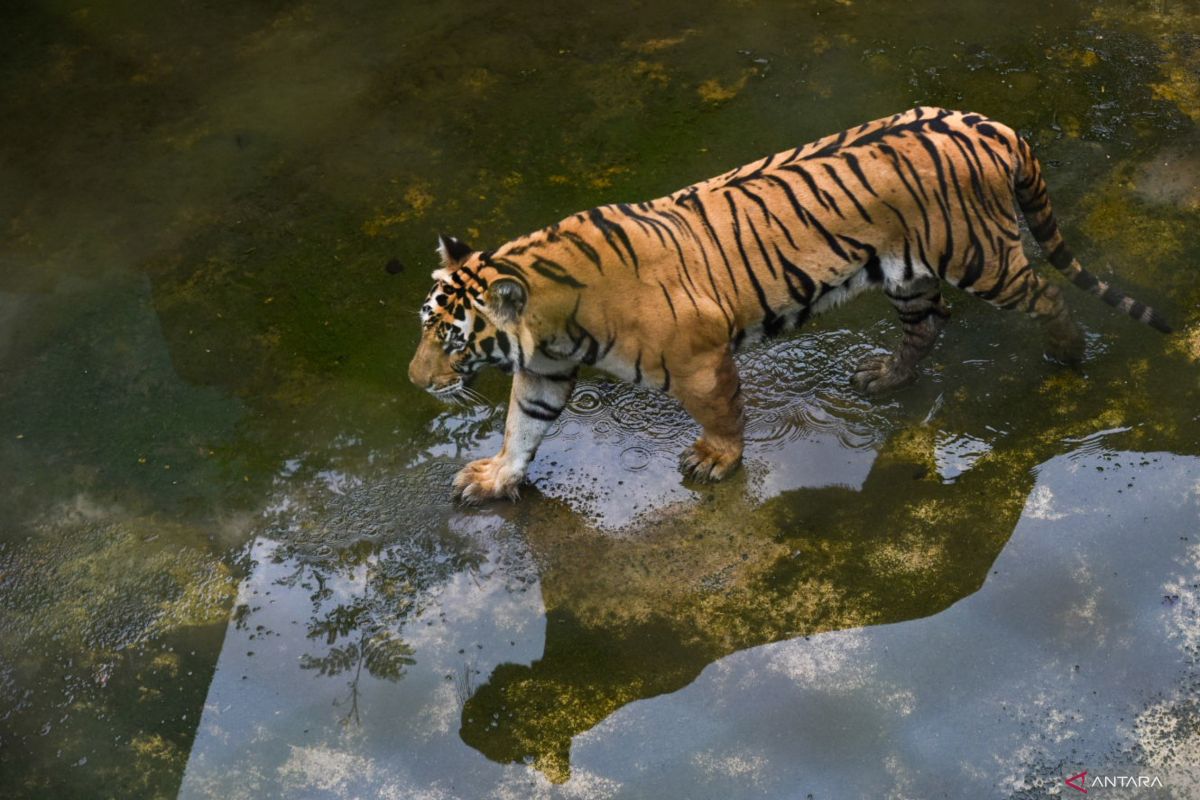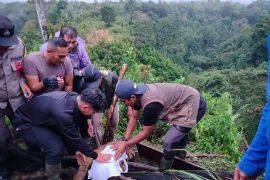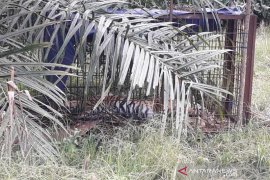This year’s global theme for the day, “Harmonious Coexistence between Humans and Tigers,” points to the importance of building a mutually respectful relationship between humans and tigers, and creating safe and sustainable living spaces for both.
At the national level, the HarimauKita Sumatra Tiger Conservation Forum echoed this sentiment through the theme “Real Action for Tiger Conservation with Communities, Government, and Businesses,” emphasizing the importance of collaboration from all parties in achieving conservation based on ecological justice.
The synergy of the two themes underscores that coexistence with wildlife is not an abstract concept, but a real agenda that must be realized through active community involvement, strong policy commitment, and development practices aligned with environmental sustainability.
In Indonesia, the Sumatran tiger (Panthera tigris sumatrae) is the only remaining tiger subspecies. Its relatives, the Bali tiger and the Javan tiger, went extinct several decades ago.
Currently, the Sumatran tiger is categorized as a “critically endangered” species in the Red List of the International Union for Conservation of Nature (IUCN), indicating a very high risk of extinction.
At the national level, the Sumatran tiger has been designated as a protected animal through the Ministry of Environment and Forestry Regulation No. P.106/MENLHK/SETJEN/KUM.1/12/2018, which prohibits all forms of illegal hunting, trade, and use of tigers.
Indonesia has demonstrated its commitment to tiger conservation through various initiatives, such as developing the Sumatra Tiger Conservation Action Plan, strengthening conservation areas, increasing security patrols, and securing multi-stakeholder collaboration for managing critical landscapes.
However, the success of Sumatran tiger conservation does not depend only on technical approaches or formal policies, but also recognizing the role of local and indigenous communities who live in close proximity to the charismatic species.
In recent decades, Sumatra Island, Indonesia’s last remaining tiger stronghold, has experienced significant human population growth, accompanied by an increased demand for land for agriculture, plantations, and infrastructure development.
This expansion of land-based economic activities has led to the depletion and fragmentation of forest habitats, driving tigers out of forest areas and into regions closer to human settlements.
As a result, the intensity of conflict between humans and tigers has increased, often leading to losses on both sides, both economic and ecological.
In this context, harmonious coexistence is no longer an idealistic notion, but a necessity. This approach promotes the understanding that the presence of tigers not only presents challenges but also has a crucial role in preserving the balance of the forest ecosystem.
Coexistence paves the way for more inclusive and adaptive conservation strategies that integrate local knowledge, wise land-use planning, and community capacity-building to prevent and respond to conflict in a sustainable manner.
Without a change in approach, we risk losing not only highly valuable biodiversity but also the cultural heritage inherent in Sumatran communities.
Local wisdom as a pillar of coexistence
To support the long-term conservation of Sumatran tigers, we also need to highlight the important role of local wisdom possessed by indigenous communities on the island of Sumatra as a contextual, strong, and sustainable approach to tiger conservation.
This is because their local wisdom, passed down through generations, has shaped a deep and respectful relationship with tigers, which is an important foundation for harmonious coexistence efforts.
Local wisdom runs deeper than cultural norms: it reflects an ecological value system that shapes conservation behavior toward forests and wildlife. To many indigenous communities in Sumatra, tigers are not just animals, but spiritual beings, forest guardians, and even ancestral manifestations.
Stories from the land of Sumatra: Tigers in values and rituals
In various regions of Sumatra, local narratives and practices reveal a deep connection between humans and tigers:
• Aceh: The tiger, or Rimueng, is depicted as the guardian of tombs and the protector of sacred spirits.
• North Sumatra: In Batak culture, tigers are said to be Ompung, a respected ancestor; so, entering the forest without their “permission” is considered a violation of custom.
• West Sumatra: The tiger is known as Inyiak or Datuak, and inspired the martial art of Silek Harimau.
• Riau: Known as Datuk, the tiger is accompanied by folklore such as Harimau Tengkes.
• Jambi: The tiger is called Imaw Srabat or Ulubalang, and people use other terms like “dio” as a form of respect.
• South Sumatra: Tigers are called Puyang, a symbol of ancestors, so harming them is believed to bring misfortune.
• Bengkulu: The Legend of the Tujuh Manusia Harimau (or Seven Tiger Men) emphasizes the importance of maintaining a balanced relationship with nature.
• Lampung: Indigenous communities on the west coast perform the Ngarak Harimau ritual before entering the forest, a form of respect for the tiger as the guardian of the forest.
Inclusive conservation strategies
Landscape-based conservation strategies integrate ecological protection with empowering local communities. They view communities not as spectators, but key partners in maintaining the sustainability of forest areas and vital species like tigers.
Coexistence is not a new concept for the people of Sumatra. They have been practicing it for a long time. Our task as practitioners and policymakers is to recognize, support, and make it part of the national tiger conservation strategy.
Global Tiger Day 2025 must be a moment for reflection and consolidation. The future of the Sumatran tiger depends on our collective ability—governments, indigenous communities, industry players, and conservation organizations—to create a safe and harmonious living space for both humans and tigers.
Local wisdom is not only worthy of preservation but also being mainstreamed as a foundation for just, effective, and sustainable conservation.
*) Dolly Priatna is a wildlife conservation practitioner and observer, Graduate School of Environmental Management-Pakuan University / the executive director of Belantara Foundation / a member of the advisory board of Forum HarimauKita
Editor: Aditya Eko Sigit Wicaksono
Copyright © ANTARA 2025












